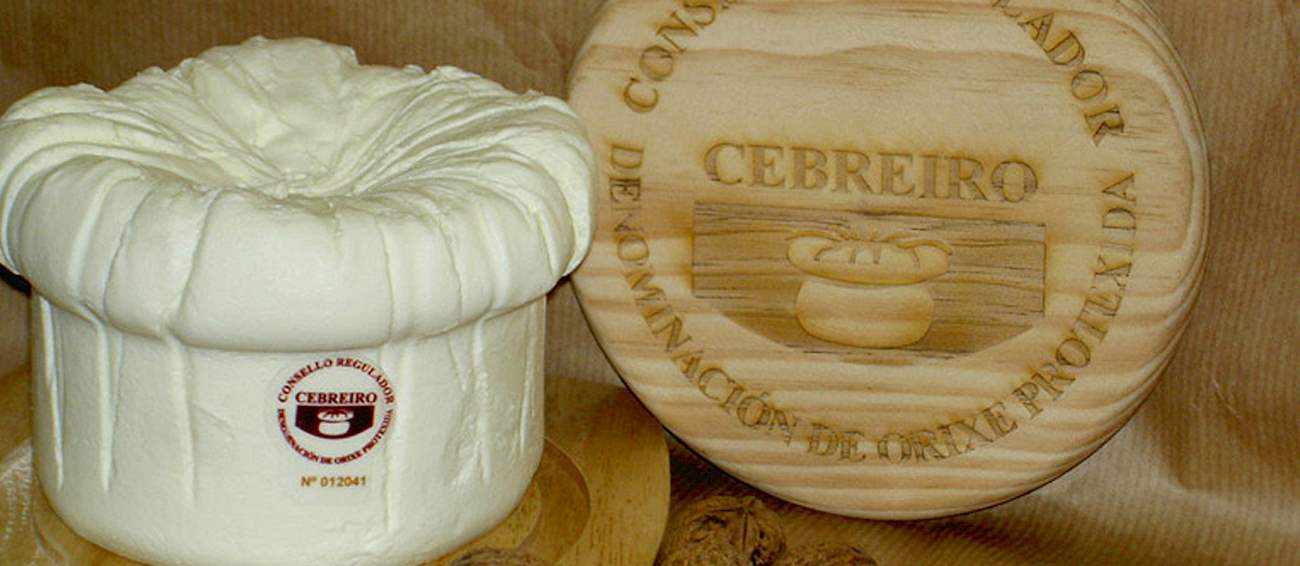Best Galician Cow's Milk Cheese Types
Arzùa-Ulloa is a cheese made from raw or pasteurized cow’s milk. This cheese is produced in Galicia, in Northwestern Spain, where it matures for at least 6 days. It is a mild cheese whose flavor is reminiscent to that of butter and yogurt.
The cheese has a smooth and somewhat waxy rind dotted with blue or white mold spots. The interior hides a smooth, velvety texture and is white to pale yellow in color. Arzùa-Ulloa is often served as a component of a dessert, but it can also be melted over toasted bread.
Pair with
Cebreiro is an unripened or ripe, mushroom-shaped cheese made from pasteurised cow's milk produced in the province of Lugo. Monks from the village of Cebreiro first started making this cheese in the 9th century. The whole milk used in the making of this cheese comes from Galician blond, brown Swiss and Friesian cows.
Unripened Cebreiro is white, grainy and soft, very creamy in texture and melts in the mouth. The flavor is slightly sharp and piquant. The ripe version of this cheese is more yellow in color, harder and denser in texture, and has a more pronounced piquancy and sharpness.
Queso Tetilla is an aged semi-soft cheese made with the milk of Friesian, Swiss Brown and Rubia Galega cows in the region of Galicia. This cheese, ripened for a minimum of 7 days, has a typical pear-like shape with a pointed top, which is the reason why it's called tetilla, meaning nipple in Spanish.
Its flavor is distinctively mild and buttery, with aromas similar to those of vanilla and walnuts. Queso Tetilla is usually paired with jamón Serrano, chorizo, membrillo, and a glass of wine.
San Simón da Costa is a cheese made from raw or pasteurized cow's milk of the Galician blond, Swiss brown, and Friesian breeds in the District of Terra Chá, in the province of Lugo. It is sold in two versions; large, which is aged for a minimum of 45 days, weighing between 0,8 and 1,5 kg, and the smaller Bufón, aged for at least 30 days with a final weight of between 0,4 and 0,8 kg.
This cheese acquires its typical ochre-yellow color and aroma through the smoking process, for which only birch from the local woods is used. It is sometimes immersed in olive oil to inhibit the growth of mold. For an interesting twist, the young and smoky San Simón da Costa is best enjoyed with homebaked bread and sweet caramelized apple marmalade.
Pair with
Best Galician Cow's Milk Cheese Producers
Galmesán is a cheese producer located in Arzúa, Galicia, Spain. They specialize in producing a hard cheese known as "Galmesán," which is often compared to Italian Parmesan or Grana Padano. The cheese is made from cow's milk and undergoes a maturation process of approximately 12 months.
Galmesán cheese is known for its granular texture and rich, nutty flavor. The company focuses on traditional methods combined with modern technology to ensure the quality of their cheeses.
AWARDS

World Cheese Awards - Super Gold
2023

World Cheese Awards - Gold
2022

Concours International de Lyon - Gold
2025
BEST Galmesán Cheeses
Best Galician Cow's Milk Cheeses
Galmesán Galician Cheese is a premium product crafted by Galmesán, a cheese producer based in Galicia, Spain. This cheese is known for its unique flavor profile, which is the result of a meticulous aging process. The cheese is typically aged for several months, allowing it to develop a rich, nutty taste and a firm texture.
The milk used in the production is sourced from local dairy farms, ensuring high quality and freshness.
AWARDS

World Cheese Awards - Super Gold
2023

World Cheese Awards - Gold
2022

Concours International de Lyon - Gold
2025
AWARDS

World Cheese Awards - Super Gold
2021

World Cheese Awards - Gold
2024
AWARDS

World Cheese Awards - Gold
2024
TasteAtlas food rankings are based on the ratings of the TasteAtlas audience, with a series of mechanisms that recognize real users and that ignore bot, nationalist or local patriotic ratings, and give additional value to the ratings of users that the system recognizes as knowledgeable. TasteAtlas Rankings should not be seen as the final global conclusion about food. Their purpose is to promote excellent local foods, instill pride in traditional dishes, and arouse curiosity about dishes you haven’t tried.





